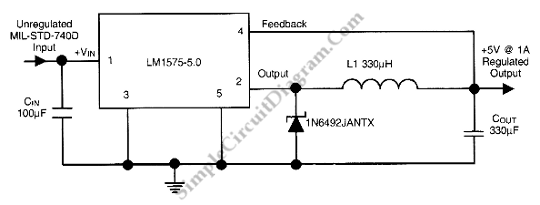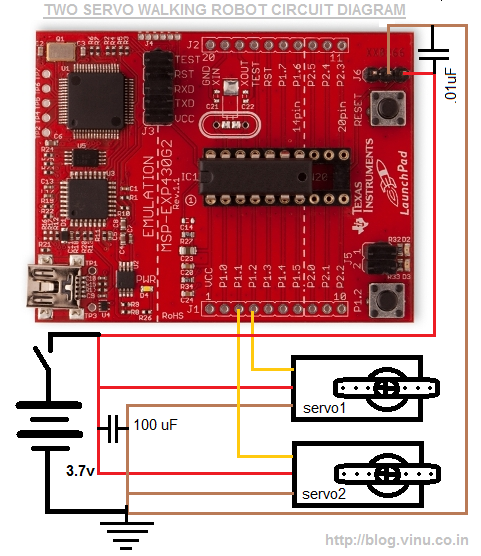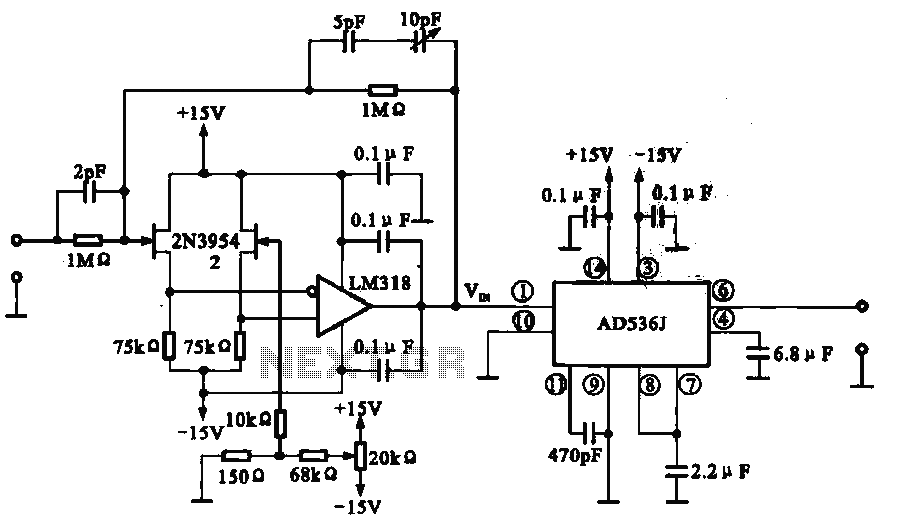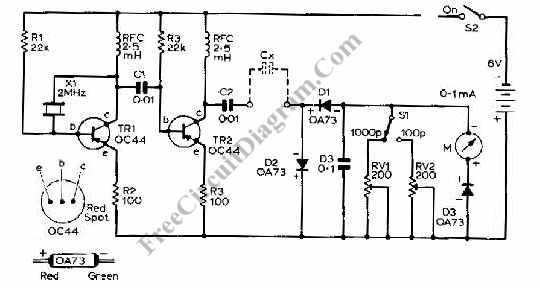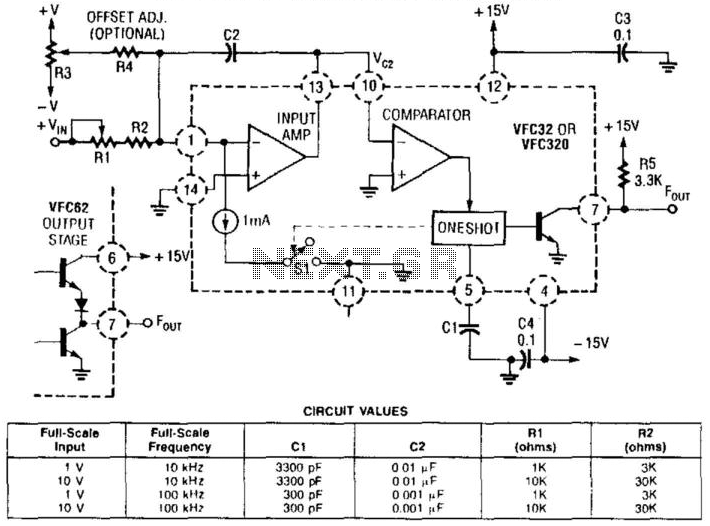
TWO TRANSISTOR RS232 TO DREAMCAST CONVERTER
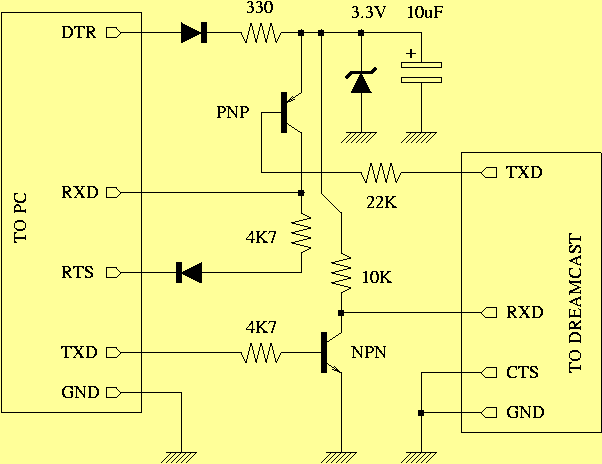
A simple circuit to connect the Dreamcast console to PC. No MAXxxx IC required. Only a few discrete components. This circuit is a direct replica of the daVinci cradle schematic:
The described circuit serves the purpose of interfacing a Sega Dreamcast console with a personal computer (PC) without the need for complex integrated circuits such as the MAXxxx series. Instead, it utilizes a minimal number of discrete components, making it an accessible and straightforward solution for users looking to establish this connection.
The circuit mimics the design of the daVinci cradle schematic, which is known for its efficiency and simplicity. The core components typically involved in such a setup may include resistors, capacitors, diodes, and possibly transistors, depending on the specific requirements for signal conditioning and voltage level shifting between the Dreamcast and the PC.
Signal lines from the Dreamcast would connect to the appropriate input pins on the PC, ensuring that the data transmission adheres to the necessary voltage levels and timing specifications. It is crucial to implement proper pull-up or pull-down resistors as required to maintain signal integrity and prevent floating inputs.
In addition, the circuit may incorporate decoupling capacitors to filter out any noise from the power supply, ensuring stable operation during data transmission. If any analog signals are involved, additional components such as operational amplifiers might be included to buffer or amplify these signals for better compatibility with the PC's input.
This simple yet effective design allows for the seamless transfer of data between the two devices, facilitating various applications such as game emulation or data transfer for development purposes. The absence of complex ICs not only reduces the overall cost of the project but also simplifies the assembly process, making it suitable for hobbyists and engineers alike.A simple circuit to connect the Dreamcast console to PC. No MAXxxx IC required. Only a few discrete components. This circuit is a direct replica of the daVinci cradle schematic: 🔗 External reference
The described circuit serves the purpose of interfacing a Sega Dreamcast console with a personal computer (PC) without the need for complex integrated circuits such as the MAXxxx series. Instead, it utilizes a minimal number of discrete components, making it an accessible and straightforward solution for users looking to establish this connection.
The circuit mimics the design of the daVinci cradle schematic, which is known for its efficiency and simplicity. The core components typically involved in such a setup may include resistors, capacitors, diodes, and possibly transistors, depending on the specific requirements for signal conditioning and voltage level shifting between the Dreamcast and the PC.
Signal lines from the Dreamcast would connect to the appropriate input pins on the PC, ensuring that the data transmission adheres to the necessary voltage levels and timing specifications. It is crucial to implement proper pull-up or pull-down resistors as required to maintain signal integrity and prevent floating inputs.
In addition, the circuit may incorporate decoupling capacitors to filter out any noise from the power supply, ensuring stable operation during data transmission. If any analog signals are involved, additional components such as operational amplifiers might be included to buffer or amplify these signals for better compatibility with the PC's input.
This simple yet effective design allows for the seamless transfer of data between the two devices, facilitating various applications such as game emulation or data transfer for development purposes. The absence of complex ICs not only reduces the overall cost of the project but also simplifies the assembly process, making it suitable for hobbyists and engineers alike.A simple circuit to connect the Dreamcast console to PC. No MAXxxx IC required. Only a few discrete components. This circuit is a direct replica of the daVinci cradle schematic: 🔗 External reference
